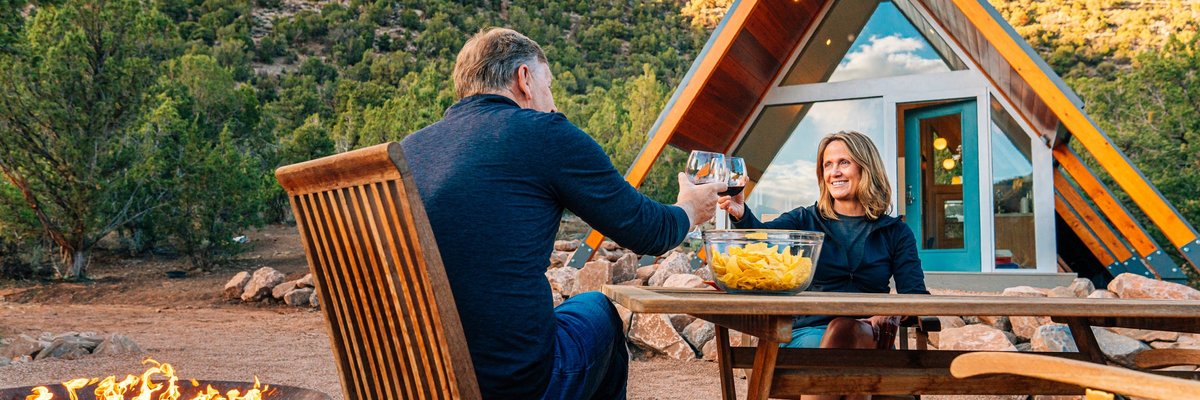Average Americans Have Less Savings Than Tiny House Owners. Here's Why
KEY POINTS
- Tiny houses have become extremely popular, especially with millennials.
- Paying for a tiny house is different from using a traditional mortgage to finance a home.
- Tiny houses also often cost less per month, allowing their owners to save money.
Is it time to go tiny?
Tiny houses have hit the big time these last few years. There are TV shows about tiny house design and construction, and even some dedicated to ordinary people trying to find their perfect tiny home. The tiny house lifestyle is all about downsizing and making do with less, along with spending a lot less on housing costs. So it's really not all that shocking that the average American has less money put away than an average tiny homeowner.
What's a tiny house, anyway?
A tiny house is just what it sounds like: a home that's far smaller than average. According to data from the U.S. Census, the average size of a newly constructed American home in 2021 was 2,356 square feet. Compare this to the average size of a tiny house: between 100 and 400 square feet. Tiny homes do come bigger, and a house up to 1,000 square feet could be classified as "tiny," but less is more in the tiny house movement. It's really all about doing a lot within a smaller space. Spend a little time on the internet researching tiny homes, and you'll find beautiful examples that resemble higher-end homes -- just in miniature.
What kind of people live in them?
Tiny house living is appealing to a lot of people, but like so many major trends of the last decade or so, millennials are leading the charge. Many members of my generation have been priced out of the traditional real estate market, and since we have a lower net worth than older people due to a variety of financial factors, it's easy to see why buying a tiny house for a lot less money is appealing to people in their 30s. But 30-somethings aren't the only Americans cutting down on square footage; baby boomers are also tiny house fans. As they reach retirement age, many see the appeal of reducing the amount of house they have to care for (and pay for). Plus, tiny homes can even be mobile, so if you're coming up on retirement and dreaming about traveling around the country, a tiny house on wheels might be a fit for you, too.
Why are tiny homeowners' finances different?
Paying for a tiny house can be a lot different than a traditional 30-year fixed-rate mortgage (which has become as American as apple pie). In fact, traditional mortgage lenders generally won't work with aspiring tiny homeowners at all, leaving them to seek personal loans or manufacturer loans. The average price to build a tiny house is just $68,000, and really savvy DIYers can spend a lot less than that building their miniature dream house. You can get recycled or sometimes free materials or buy tiny home kits, and there are a lot of resources out there to help you achieve this lifestyle. If you're already pretty handy in the construction trades, you might just have what it takes to build one yourself.
Compare that $68,000 (since that is an average figure, not a median, most tiny homeowners likely spend less) to $407,600. According to the National Association of Realtors, that was the median sale price of an existing American home as of May 2022. Now I bet you're really starting to see the financial appeal of a tiny house!
Due to the vastly lower costs to build and maintain a tiny home (for example, housing expenses can be a lot less when you have fewer square feet to heat and cool and less home maintenance to perform on a brand-new and very small home), tiny homeowners save a lot of money when compared to those in more traditional housing. In fact, 55% of them have more in savings than an average American, with 89% having less credit card debt, and 60% living with no credit card debt at all. Tiny house living can be a gateway to more financial freedom.
Should you buy a tiny house?
Tiny house living isn't for everyone. There are some financial concerns with tiny houses that go beyond the lower purchase costs, including the cost of often custom-made appliances to fit into a tiny home, transportation of the home (if it's intended to be mobile), and the cost of land to put the house on. But if you've got a can-do spirit, some money saved up for a house, and you want to forgo the traditional mortgage route (and perhaps save some money on your monthly housing costs), a tiny house might just be a fit for you.
Our Research Expert




